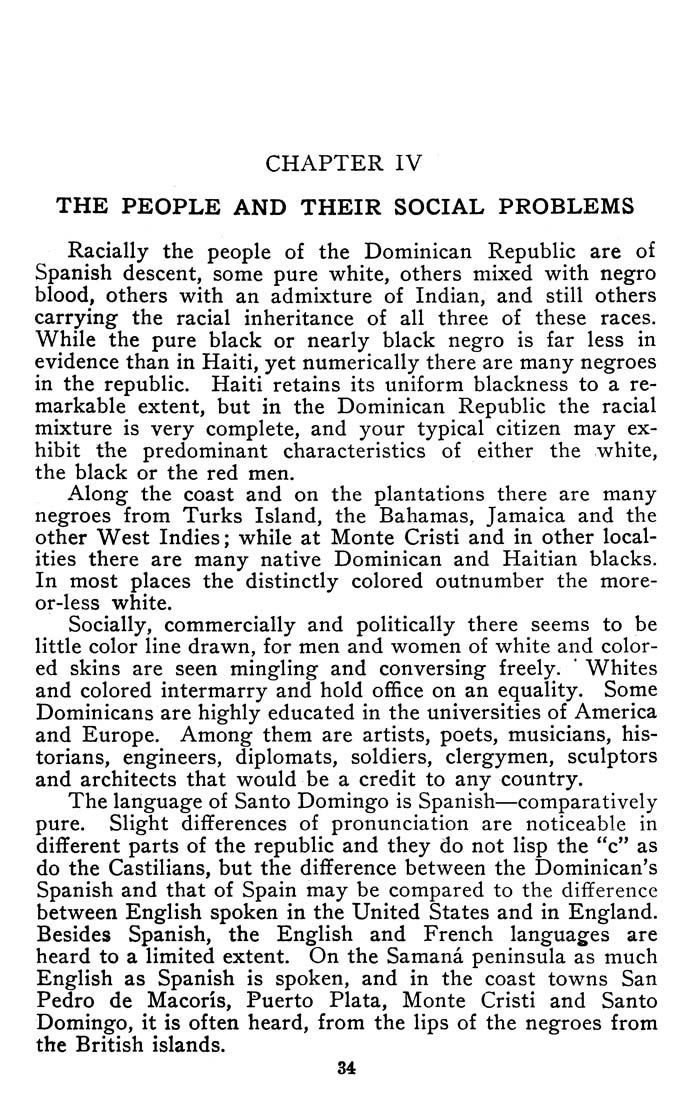CHAPTER IV
THE PEOPLE AND THEIR SOCIAL PROBLEMS
Racially the people of the Dominican Republic are of
Spanish descent, some pure white, others mixed with negro
blood, others with an admixture of Indian, and still others
carrying the racial inheritance of all three of these races.
While the pure black or nearly black negro is far less in
evidence than in Haiti, yet numerically there are many negroes
in the republic. Haiti retains its uniform blackness to a re¬
markable extent, but in the Dominican Republic the racial
mixture is very complete, and your typical citizen may ex¬
hibit the predominant characteristics of either the white,
the black or the red men.
Along the coast and on the plantations there are many
negroes from Turks Island, the Bahamas, Jamaica and the
other West Indies; while at Monte Cristi and in other local¬
ities there are many native Dominican and Haitian blacks.
In most places the distinctly colored outnumber the more-
or-less white.
Socially, commercially and politically there seems to be
little color line drawn, for men and women of white and color¬
ed skins are seen mingling and conversing freely. * Whites
and colored intermarry and hold office on an equality. Some
Dominicans are highly educated in the universities of America
and Europe. Among them are artists, poets, musicians, his¬
torians, engineers, diplomats, soldiers, clergymen, sculptors
and architects that would be a credit to any country.
The language of Santo Domingo is Spanish—comparatively
pure. Slight differences of pronunciation are noticeable in
different parts of the republic and they do not lisp the "c" as
do the Castilians, but the difference between the Dominican's
Spanish and that of Spain may be compared to the difference
between English spoken in the United States and in England.
Besides Spanish, the English and French languages are
heard to a limited extent. On the Samana peninsula as much
English as Spanish is spoken, and in the coast towns San
Pedro de Macoris, Puerto Plata, Monte Cristi and Santo
Domingo, it is often heard, from the lips of the negroes from
the British islands.
34
|








